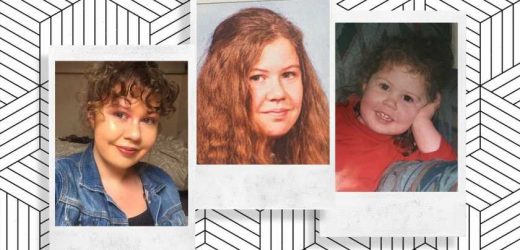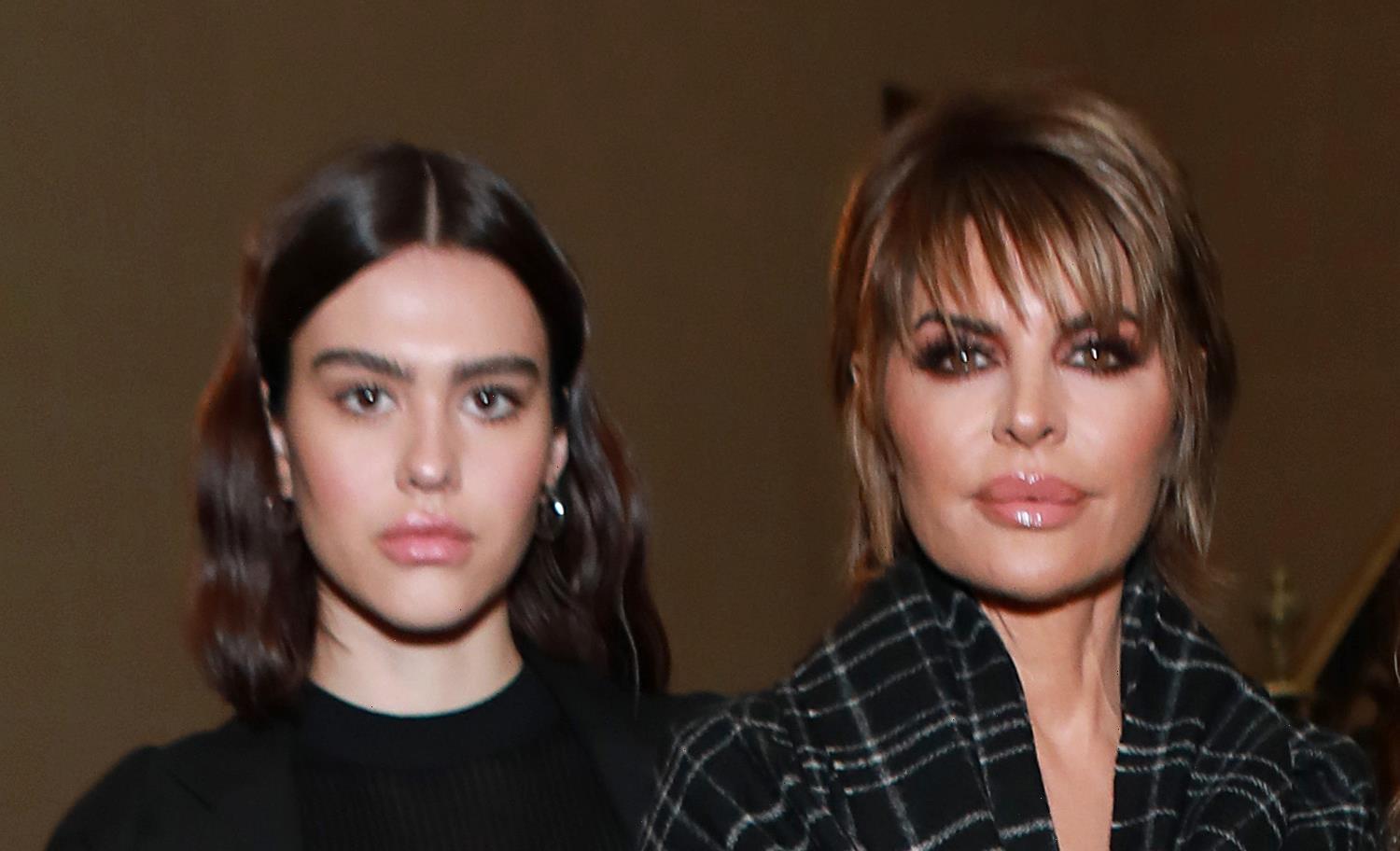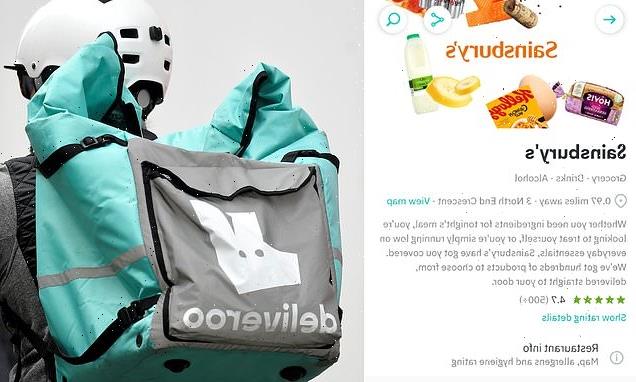Welcome to Beauty Feels, a series exploring the different ways in which beauty routines and rituals can provide emotional support and aid journeys of self-discovery.
Hannah Van-de-Peer spent years wanting to change her hair. But after discovering her ancestry at the age of 21, she finally realised it’s her crowning glory.
My hair is my crowning glory. My parents often remark that I was the only baby born in the hospital with a full head of thick, curly locks. Adorable little dark brown ringlets that attracted a mass of compliments from passers-by.
Each of my paternal relatives had tricky-to-manage hair, but I was the only one with defined curls – a feature I must’ve inherited from a distant ancestor. I was always known as a ‘throwback’ within my family. The tragedy is, though, we never knew how to truly look after my curls.
When I started primary school, I believed the ‘normal’ thing to do to my hair was brush it out. I didn’t want it to get matted or tangled, and so, after 15 to 20 minutes of brushing through my hair entirely (and a lot of screaming in pain), I was left with a frizzy halo.
My mum would tie my candyfloss cloud into pigtails, or give me a half-up ponytail. I instantly felt like the odd one out. I remember gazing at a girl in my class – envious that her black, glossy hair was long enough for her to sit on at carpet time.
Slowly but surely, my hair became more of a novelty than a marvel. Teachers and hairdressers would tell me they could ‘sell my hair for a lot of money’ while suppressing laughter. As a child I was never really sure what this meant.
As I graduated on to secondary school, I felt more alone than ever. My hair grew outwards as opposed to downwards. People drew attention to my fluffy halo for all the wrong reasons.
I started coming of age before body positivity and celebrating our differences became mainstream – back when Britney Spears, Paris Hilton and Kesha were idolised for their pin-straight, blonde hair. I remember each of the girls in my class having hair that cascaded down their backs like waterfalls. Sleek, shiny hair that smelt of Hollister and Batiste.
I’d hear a couple of the girls snidely commenting: ‘Nice hair, Han’ as I walked down the corridor. This destroyed any remnant of love I felt for my own mass of hair in an instant.
I spent the next few years straightening my hair five times a week, frazzling any remaining curls with 230ºC heat.
I obsessively researched chemical straightening – otherwise known as relaxing, after my previous hairdresser made an off-the-cuff comment about doing this with another client. I was only 12 at the time. I imagined how it’d feel, being able to wake up in the morning, effortlessly brushing my hair before walking straight out to the school bus. Never having to live in fear of embarrassment again. I begged my mum to pay for it – but she refused, telling me I’d regret it in the future.
I spent the next few years straightening my hair five times a week, frazzling any remaining curls with 230ºC heat. I spent around two hours on my hair routine every single morning, getting up at 6am without fail. I hated it.
As well as feeling like the odd one out in social settings, I often felt like an anomaly when it came to my family. I was born to a very British mum with porcelain skin and Irish roots, and a dad with darker skin, as well as a mop of thick, black hair. My heritage frequently confuses people because I’m a mix of each parent.
My skin is lighter, but my hair is dark. The hairs on my arms and upper lip are blonde, but my brown almost-monobrow was tough to ignore during puberty. I was born in England, but my surname tricks people into thinking I’m ‘not from here’. My dad’s lineage was always called into question due to his dark features, along with my own.
At the age of 21, I decided to do some in-depth research into my background. I’d been building up to this for years, feeling too scared to take the step. What if I couldn’t find any explanation? What if I was destined to have a clouded view of where I came from?
I’d always known I had Jewish ancestors on my dad’s side, but the details were vague and speculative. After watching an episode of Who Do You Think You Are? on BBC One, I finally learned about Sephardim – and realised how much I identified with the culture.
Sephardim is a Jewish ethnic division which encompasses Jews of Spanish or Portuguese origin.
I managed to trace my surname, Van-de-Peer, back to an online Sephardic database of family names. I was always the person who couldn’t find her name on anything, so this was huge! I followed the reference to an old book about the surname Pereira, which helped me to connect the dots.
‘Pereira’ means ‘pear’ in Portuguese. ‘Van-de-Peer’ means ‘of the pears’ in Dutch.
Having an insight into my heritage gave me the self-love I needed to accept my unconventional features, particularly my hair.
My hair isn’t just my most defining feature – it represents my strength, my heritage and the beautiful fact that I was blessed with this cultural characteristic, centuries later. I knew I had to start looking after it properly.
You may also like
“Why my mum is the only constant in my ever-changing afro hair journey”
This is a journey I’m still very much embarking on. I’ve been experimenting with products, methods (like the curly girl routine) and homemade hair masks for a while (no, honey will not make your hair stronger – just stickier.)
Sulphate-free hair masks and shampoos containing shea butter have been a lifesaver for my curls. Hand-combing my curls in the shower and air-drying my hair have taught me a lot about investing time into myself and patience when it comes to practising self-love.
I still have an awful lot to learn, but I’m enjoying finding out more about my hair and what makes it tick. The commitment I’ve made to stop my self-hatred in its tracks is a step I never thought I’d take. Discovering more about my family’s identity gave me a sense of purpose and the push I needed.
I’d encourage everyone to spend that time getting to know yourself – it’s the most worthwhile thing I’ve ever done.
You may also like
The Rachel, the pixie and space buns: iconic 90s haircuts are set for a comeback – here’s how to recreate them
Images: Hannah Van-de-Peer
Source: Read Full Article







